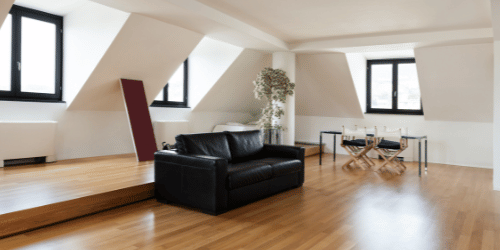Transitioning between different flooring materials is a crucial aspect of home remodeling that can significantly impact the overall aesthetic and functionality of your space. Whether you’re updating a single room or undertaking a whole-house renovation, achieving a seamless transition between flooring types ensures a cohesive and polished look. This blog post will provide you with comprehensive insights and practical tips to master the art of flooring transitions.
The key to seamless flooring transitions lies in meticulous planning, selecting the right materials, and employing professional installation techniques. By following these guidelines, you can create a harmonious and visually appealing flow throughout your home.
Understanding Flooring Transitions
Importance of Seamless Transitions
Seamless transitions between rooms not only enhance the aesthetic appeal of your home by creating a visually pleasing flow but also contribute significantly to safety by reducing tripping hazards. Additionally, well-executed transitions play a crucial role in protecting the edges of your flooring materials, ensuring greater durability and extending their lifespan. Investing in quality transitions is, therefore, both a practical and stylish choice for maintaining the integrity and appearance of your home.
Types of Flooring Transitions
T-Molding is an excellent choice for achieving a seamless transition between floors of the same height, such as transitioning from one hardwood area to another. This type of molding not only enhances the visual continuity of your flooring but also provides a smooth and polished look that ties the spaces together. When dealing with different floor heights, like transitioning from tile to carpet, reducer strips are essential. They create a gentle slope that bridges the gap, preventing tripping hazards and ensuring a cohesive flow between the surfaces. For doorways, thresholds are ideal as they offer a smooth and durable transition between different flooring types, protecting the edges and adding a refined finish to your home’s interior.
Choosing the Right Transition Strips
When selecting transition strips, it’s crucial to ensure that the material is compatible with both flooring types to maintain a unified aesthetic and functional connection. Material compatibility not only affects the look but also the durability of the transition. Additionally, color coordination is key; choosing a strip in a shade that blends well with both adjoining floors will help maintain a cohesive and harmonious appearance throughout your space. Lastly, prioritize durability by opting for high-quality materials that are designed to withstand daily foot traffic and wear, ensuring that your transitions remain both beautiful and functional over time.
Planning Your Flooring Transition
Assessing Your Space
When planning transitions between different flooring types, start by considering the functionality of each room. Choose flooring materials that align with how the space is used, ensuring they can withstand the demands of the environment. For areas with high foot traffic, such as hallways and entryways, plan transitions that are durable and safe, minimizing the risk of wear and tear or tripping hazards. Additionally, keep your aesthetic goals in mind; select materials and transition strips that enhance the overall look you want to achieve, creating a cohesive and visually appealing flow throughout your home.
Measuring and Preparing
To achieve a seamless transition between different flooring materials, start by taking accurate measurements of the height difference between them to select the appropriate transition strip. Proper surface preparation is crucial; make sure both flooring surfaces are clean and level to ensure a smooth installation. Before finalizing the placement, create a mock layout of the transition to visualize the end result and make any necessary adjustments, ensuring the transition meets both functional and aesthetic expectations.
Professional Consultation
When planning flooring transitions, it’s essential to consult with a flooring professional to ensure you choose the best methods and materials that suit your specific needs and the unique characteristics of your home. Understanding the latest installation techniques is also crucial for achieving a flawless finish that enhances the overall aesthetic of your space. Additionally, obtaining a detailed cost estimate will help you stay within budget, allowing you to prioritize quality and durability without compromising on affordability. Proper planning and expert guidance are key to a successful flooring project.
Installation Techniques
Preparing the Subfloor
To ensure a smooth and professional flooring transition, start by thoroughly cleaning the subfloor to remove any debris or dust that could interfere with the installation. Next, apply a leveling compound to even out the subfloor, creating a stable and level surface for the transition strips. Before finalizing the installation, perform a dry fit by laying out the transition strips without adhesive to check for a perfect fit. This step allows for any necessary adjustments, ensuring a seamless and precise transition between different flooring types.
Installing Transition Strips
For a secure installation, start by applying a high-quality adhesive to the subfloor, ensuring a strong bond with the transition strip. Carefully position the transition strip over the adhesive, aligning it precisely between the flooring types. Press down firmly to ensure good contact and use weights to hold the strip in place while the adhesive sets. This will help achieve a durable and seamless transition, preventing movement and ensuring a long-lasting installation.
Finishing Touches
To complete the installation, start by applying a high-quality sealant to protect both the transition strip and the edges of the flooring. This will help ensure long-term durability and prevent moisture damage. Next, carefully clean any excess adhesive or sealant from the surrounding flooring to avoid residue and maintain a neat appearance. After the adhesive has fully set and the area is clean, conduct a thorough inspection of the transition to ensure it is secure, aligned correctly, and visually appealing. Make any necessary adjustments to achieve a flawless finish and confirm that the transition meets your aesthetic and functional expectations.
Common Challenges and Solutions
Uneven Floor Heights
When using reducer strips, make sure to select the right type to effectively bridge the height difference between two flooring surfaces. Begin by applying leveling compounds to the subfloor to create an even surface for the transition strip. For more complex height differences or unique flooring scenarios, consider custom transition pieces designed specifically to accommodate those variations. This ensures a smooth, seamless transition that enhances both the appearance and functionality of the flooring.
Different Flooring Materials
Material compatibility is crucial when selecting transition strips, as the material should effectively match both flooring types to ensure a smooth connection. Additionally, color matching the transition strip with both flooring colors helps maintain a cohesive and aesthetically pleasing look. For the best results, consider hiring a professional installer to ensure that the transition is both seamless and durable, as they will have the expertise to handle complex installations and ensure a perfect finish.
High Traffic Areas
Opt for transition strips crafted from durable materials that are specifically designed to handle heavy foot traffic and resist wear and tear, ensuring long-lasting performance. Regular maintenance is crucial—periodically clean and inspect the transition strips to prevent buildup and identify any signs of wear or damage early on. If necessary, reinforce the transition strips with additional adhesive or fasteners to keep them securely in place and maintain a smooth, functional transition between flooring types. This proactive approach will help preserve both the appearance and functionality of your flooring transitions.
Answering Common Questions
Q1 What is the best way to transition between different flooring materials?
A1 The best way to transition between different flooring materials is to use transition strips that match the height and color of both flooring types. Ensure the subfloor is level and clean before installation.
Q2 How do I handle height differences between flooring materials?
A2 Use reducer strips or leveling compounds to bridge height differences. Custom transition pieces can also be designed for unique height variations.
Q3 Can I install transition strips myself, or should I hire a professional?
A3 While DIY installation is possible, hiring a professional ensures a seamless and durable transition, especially for complex projects or high-traffic areas.
The Impact of Flooring Transitions on Home Value
Seamless flooring transitions can significantly enhance the value of your home. They create a polished and cohesive look that appeals to potential buyers. Additionally, well-executed transitions improve safety and durability, which are attractive features for any homeowner.
Seeking Expert Advice
For the best results, consider seeking expert advice from a professional flooring installer. They can provide recommendations on the best materials and techniques for your specific project, ensuring a flawless and long-lasting transition.
Conclusion
Achieving seamless transitions between different flooring materials is a vital aspect of home remodeling that enhances both the aesthetic appeal and functionality of your space. By understanding the importance of transitions, carefully planning your project, and employing professional installation techniques, you can create a cohesive and polished look throughout your home. Whether you’re tackling a DIY project or seeking professional assistance, attention to detail and thoughtful design choices are key to success. With the right approach, your flooring transitions will not only be visually pleasing but also durable and safe, adding value to your home for years to come.
Visit us at Pristine Luxury Remodeling
For more information and personalized guidance visit us at Pristine Luxury Remodeling, We specialize in providing exceptional remodeling services that elevate your space into a masterpiece of luxury.







